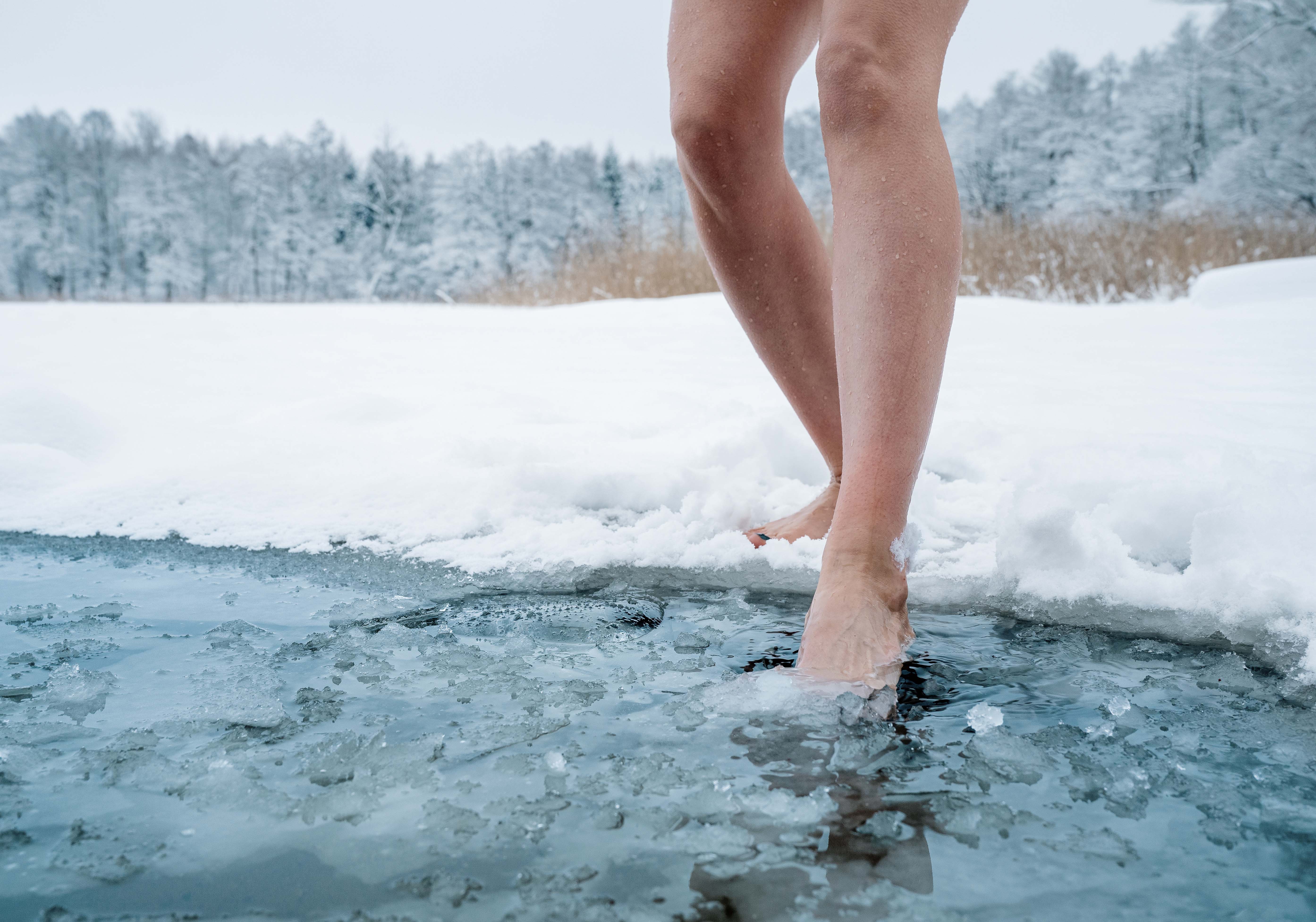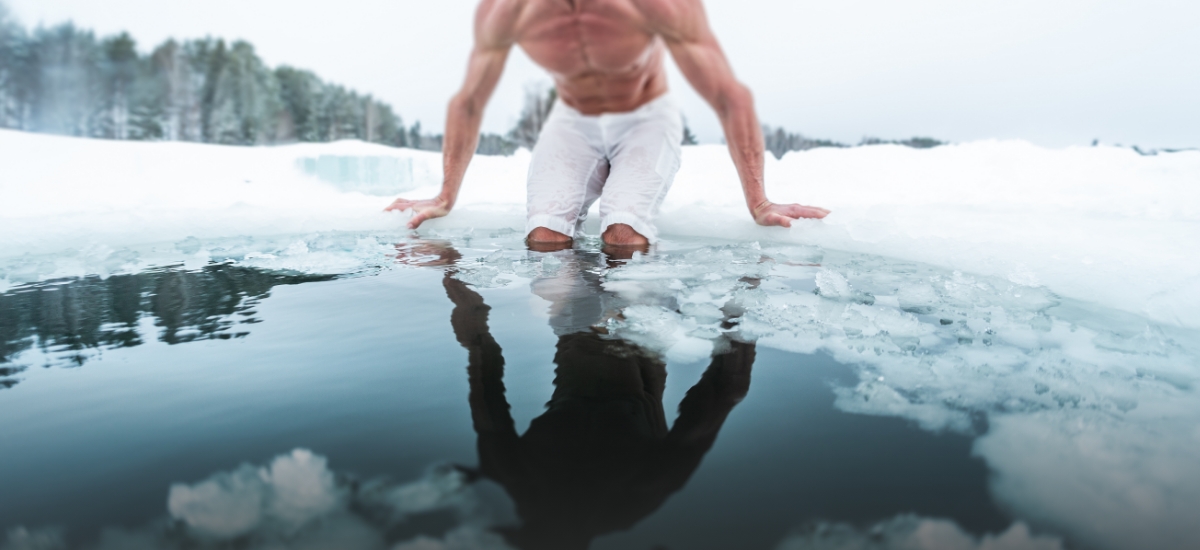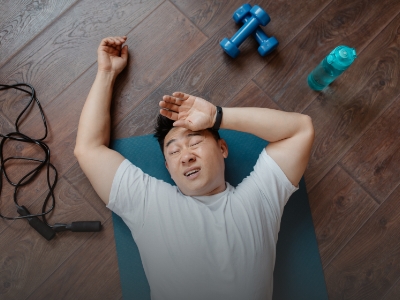Published on 5 December 2023
A growing number of people have been taking ice baths for purported health benefits such as muscle relief. Dive into the facts before joining them.
Scroll through Tik Tok and you’ll come across videos of people immersing themselves in tubs of cold water — but they may not be simply doing this for a lark. Ice baths, or cold water therapy, is a wellness trend with purported benefits such as decreasing inflammation after a workout, easing sore muscles and aiding recovery after intense physical activity. There is some science behind those claims: In theory, blood vessels constrict when cold, which reduces swelling. The cold water also helps to lower your core body temperature, which feels great after a hot and sweaty session of exercise.
Fuelling this craze are celebrities such as Lady Gaga and tennis star Naomi Osaka, who sing its praises. It has even become so popular that top hotels and spas offer this chilly service. Contrary to what its name suggests, and images of public figures soaking in bathtubs filled with ice cubes, the recommended temperature of an “ice bath” is actually a less intense 10 deg °C to 15 deg °C.
Here’s what you need to know about ice baths and how to take them safely before you take the plunge.
1. Ice baths are not suitable for everyone
Brr. Before you take an ice bath, make sure your body can withstand the cold. This is not merely a #challengeaccepted moment — the drop in temperature could cause adverse effects in those with underlying health conditions. Dr Wang Mingchang, Consultant and Sports Physician, Division of Sports, Shoulder & Elbow Surgery, Department of Orthopaedic Surgery, National University Hospital (NUH), advised getting screened for peripheral vascular disease, high blood pressure or diabetes before going for your inaugural soak.
“An ice bath can cause reduction in blood flow to the extremities in peripheral vascular disease; increase in blood pressure in those with high blood pressure and increased risk of hypothermia in patients with impaired ability to regulate body temperature — as may be the case with poorly-controlled diabetes,” said Dr Wang.

2. Slow and steady does it…
It may be tempting to jump right into the chilly water, but this coud be dangerous. A study published in the International Journal of Circumpolar Health linked ice baths to cold shock response, a set of physiological reactions including elevated breathing, heart rate and blood pressure, which are caused by a rapid decrease in temperature.
Dr Wang suggested immersing your feet and lower legs in the water first to acclimatise your body to the temperature. “As you get comfortable, you can move toward your chest. Do this instead of immediately immersing the whole body.” He added that you should limit your time in the ice bath to no longer than 10 to 15 minutes.
3. Don’t wait too long after exercise to do it
For ice baths to be most effective, you should ideally do it soon after a workout. “If you wait an hour or longer, the inflammatory state which the ice bath serves to ameliorate, would have already reduced in intensity,” noted Dr Wang.

4. Ice baths can dull pain, but not in a good way
Water at low temperature has a numbing effect due to constricted blood vessels, which can alleviate muscle soreness. At the same time, it can also numb the pain from an injury sustained during your workout, causing you to continue straining the affected area and thus delaying recovery.
Dr Wang emphasised the importance of distinguishing between general muscle soreness and potentially more serious injuries, stating, “The intensity of muscle soreness typically reduces with warm-up exercise and movement. The pain associated with an injury tends to be sharper and does not abate with warm-up exercise. There may also be localised swelling or warmth which persists even after the workout.”

5. Ice baths are better paired with certain types of exercises
According to Dr Wang, those doing intense aerobic or resistance exercise sessions could reap the most benefits from taking a cold water plunge, as it can help to relieve inflamed muscles. It could be an effective recovery method after high-intensity exercise, such as high intensity interval training (HIIT), which causes more microtrauma to muscle tissue than moderate intensity workouts.
On the other hand, those aiming to build muscles may want to consider alternative recovery methods. Some studies suggested that ice baths may hinder muscle growth by excessively reducing inflammation, which is a crucial aspect of the body’s natural response to muscle stress, and contributes to long-term muscle adaptation and hypertrophy. Always consult your healthcare providers for personalised advice on recovery strategies based on your health conditions.
6. There are alternatives to ice baths
If cold baths are not suitable for you (or if you just detest the sensation it brings), Dr Wang recommended other options for active post-workout recovery such as light jogging, stationary cycling and static stretches. These may help to boost blood circulation to remove toxins and promote flexibility to reduce muscle stiffness and maintain joint mobility after performing repetitive movements.
In consultation with Dr Wang Mingchang, Consultant, Division of Sports, Shoulder & Elbow Surgery, Department of Orthopaedic Surgery, and Sports Physician, Division of Sports, Shoulder & Elbow Surgery, Department of Orthopaedic Surgery, NUH.




